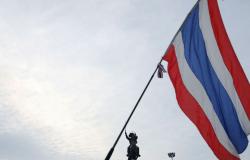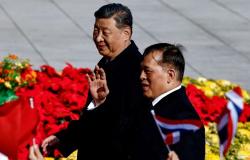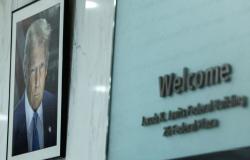Hello and welcome to the details of Need a ride? Boeing hails SpaceX for astronaut pickup service in embarrassing Starliner snafu and now with the details
Nevin Al Sukari - Sana'a - (L-R) Nasa Associate Administrator James Free, Associate Administrator Ken Bowersox, Commercial Crew Manager Steve Stich and International Space Station Programme Manager Dana Weigel speak during a news conference to discuss plans to return two astronauts who remain stranded at the International Space Station. — AFP
WASHINGTON, Aug 25 — SpaceX is coming to Boeing’s rescue.
The legacy company needing aid from an upstart rival is hardly welcome news to the aerospace giant.
Because of problems with Boeing’s Starliner spacecraft, two astronauts who rode on it to the International Space Station in June will finally return to Earth on a vessel built by Elon Musk’s SpaceX.
Nasa’s announcement Saturday of that plan represents a blow — even a humiliation — for Boeing, a historic partner of the American space agency.
It couldn’t come at a worse time for Boeing. The sterling reputation its airplanes have long enjoyed has been seriously eroded by a series of malfunctions and two fatal crashes in recent years.
“It’s not a good time for Boeing,” Erik Seedhouse, a professor at Embry-Riddle Aeronautical University, told AFP.
For Butch Wilmore and Suni Williams, the astronauts who flew to the ISS on Starliner, to have to return on a SpaceX craft is “very embarrassing,” he added.
“It is an image problem,” agreed Cai von Rumohr, an aeronautics analyst with TD Cowen, adding that it “could endanger future contracts with Nasa.”
But Boeing’s status and mammoth size give it considerable capacity to bounce back.
“I don’t think Boeing is going anywhere,” said Glenn Lightsey, a professor at the Guggenheim School of Aerospace Engineering at Georgia Tech University.
Boeing has engendered cost overruns of some US$1.6 billion (RM7 billion) in developing Starliner, hit by repeated delays in development and price hikes linked to supply chain problems.
But to put that in context, Boeing’s Defence, Space & Security division had turnover of US$24.93 billion in 2023 — while the overall company had revenues of US$77.79 billion.
“Yes, they can recover, because they’re a juggernaut,” said Seedhouse.
Regaining confidence
Despite repeated delays in the Starliner programme, Nasa has never suggested any weakening of the collaboration with Boeing since first placing orders for space “taxis” in 2014 from both Boeing and SpaceX.
The US space agency has repeatedly insisted its goal is to have two vehicles to ferry astronauts to and from the ISS, a sort of insurance plan in case one has problems.
What Boeing needs to do to regain confidence, Seedhouse said, is “to solve all these problems and have a successful re-flight sometime next year, probably, with another crew on board.”
The company has insisted the two problems Starliner has encountered — helium leaks and a defective propulsive system — are fixable.
Such problems are not a “huge surprise,” Lightsey said, adding that “it’s still early development for Starliner.”
The craft has undergone three orbital tests, two of them uncrewed.
“It’s really only after maybe you get five missions under your belt” that “you know how everything is going to behave in space,” he added.
“Even if it takes a couple more flights, I don’t expect Nasa to give up on them.”
A tough comparison
The comparison between the rival programs of Boeing and SpaceX is nonetheless embarrassing for the older and much larger firm.
Musk’s company was widely seen as an outsider in 2014 and received US$2.6 billion for the project, compared to Boeing’s US$4.2 billion.
Yet for the past four years it has been the sole means for astronauts to travel to and from the ISS.
SpaceX had one advantage from the start: its Dragon vessel has been resupplying the ISS since 2012.
But Boeing, for its part, has a long history with Nasa, with decades of work on the US space program.
“They were involved with the Apollo programme; they built some of the modules on the space station,” Seedhouse said.
“So it’s a surprise that, in such a short period... they’ve gone from being a company that’s performed very well to a company that has been making mistakes, left, right and centre.”
He said there was no single reason for the serial setbacks, but that “problems with standards and quality control” at Boeing “apply both to the spacecraft side of things and also to the aircraft.”
Because of its size, Seedhouse said, Boeing is intrinsically more bureaucratic than SpaceX, where decisions can be made quickly.
But the dynamic could change one day.
At some future point, Lightsey said, “SpaceX will need help, and Boeing will be able to return the favour.
“I assume it will all come full circle eventually.” — AFP
These were the details of the news Need a ride? Boeing hails SpaceX for astronaut pickup service in embarrassing Starliner snafu for this day. We hope that we have succeeded by giving you the full details and information. To follow all our news, you can subscribe to the alerts system or to one of our different systems to provide you with all that is new.
It is also worth noting that the original news has been published and is available at Malay Mail and the editorial team at AlKhaleej Today has confirmed it and it has been modified, and it may have been completely transferred or quoted from it and you can read and follow this news from its main source.





